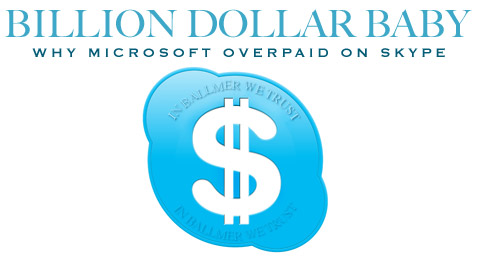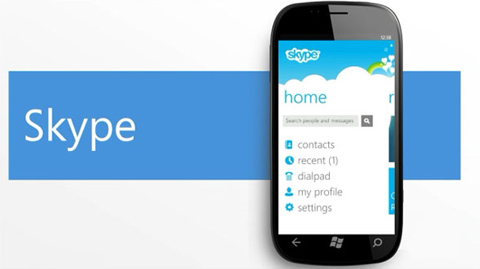
5/13/2011
Gadgets Channel / Bullz-Eye Home
Some people are already calling Microsoft’s acquisition of Skype on Monday the death of the VoIP provider. After all, how can a communications pioneer like Skype survive as part of a company best known for its bureaucracy? Others are saying its Microsoft that got the raw end of the deal, overpaying for a company that has only been profitable to the people who have sold it. The way I see it, this is probably Microsoft’s smartest move in the last decade, an acquisition that works for both its enterprise and consumer divisions and gives the software giant a massive social boost.
There’s no denying that Microsoft has failed to innovate over the course of the last 10 years, but that hasn’t hurt its market penetration in any serious ways. The business sector is still packed with Microsoft products, a perfect place to deploy Skype’s considerable collaborative tools. With Skype as a part of Microsoft’s software offering, corporate clients could feasibly consider dropping competitive products from companies like Cisco. Integrating Skype into products like Office and Outlook also gives Microsoft a way to compete with Google, who was supposedly also bidding on Skype.
Let’s also not forget about that one extremely successful division of Microsoft: Xbox. The Xbox certainly wasn’t perfect at launch, but over the course of five years or so, the 360 has an absolutely massive install base and continues to grow as the media hub of the living room. Microsoft also has Kinect, an interactive video technology that, when paired with Skype, suddenly becomes a dirt cheap version of home video conferencing that competitors have yet to successfully deploy. You might remember Umi, the video conferencing unit from Cisco I mentioned a couple weeks back. Umi’s price tag dwarfs an entire Xbox 360 rig, and that’s without the yearly subscription fee.
The Skype purchase has benefits beyond just practical application, too. You know that list of contacts that pops up every time you open Skype? Well, Microsoft just bought that. As of this writing, there are just shy of 28 million people signed in to Skype, and Microsoft now knows how those 28 million people are connected. With its investments in Facebook, you could almost justify Microsoft’s $8.5 billion purchase on its social value alone.

And then, of course, there’s the Windows Phone. A lot of people seem convinced that the Windows Phone is Microsoft’s real reason for purchasing Skype, but I’m not sure I buy it. The Windows Phone has a hard road ahead, regardless of whether or not Microsoft has a product that can successfully compete with Google Voice. The Android and iOS ecosystems are so far ahead in terms of development that it’s almost impossible to see Skype digging Microsoft out of the hole. I could see Skype as a way to integrate new customers - they get comfortable with the service on other devices and a switch to a Windows Phone suddenly isn’t so tough. In order for that to happen, though, the Windows Phone needs to offer a compelling user experience and it just doesn’t do that. Not yet, anyway.
Perhaps the smartest thing I’ve read about Microsoft’s billion dollar baby is that it looks bad because Microsoft doesn’t know how to market the acquisition. When Apple rolls out a new product or service, even when that product or service has been part of an acquisition, it does so with the final product. Consumers are shown an experience and given justification for its existence, all in a neat and tidy, 30-minute keynote address. The Skype acquisition is nothing like that. The potential for Skype integration across the Microsoft platform is all speculative. Sure, a lot of it sounds really good for the company, but all of the potential benefits of this deal rely on one simple question: Can Microsoft deliver? It’s an answer we are unlikely to have for several years, but if the answer is ‘no,’ you can bet that Microsoft’s best days are behind it.
You can follow us on Twitter and Facebook for content updates. Also, sign up for our email list for weekly updates and check us out on Google+ as well.









